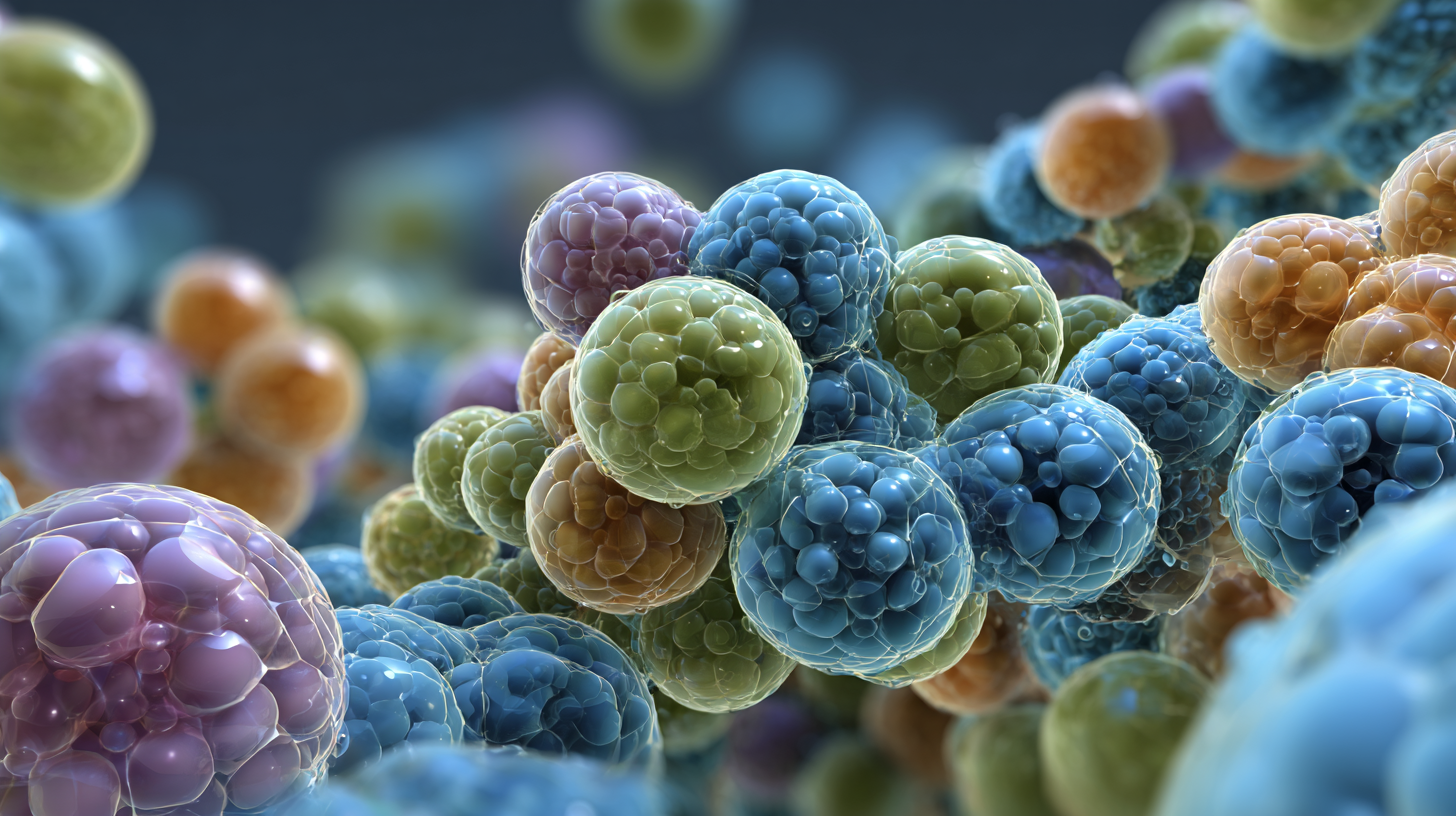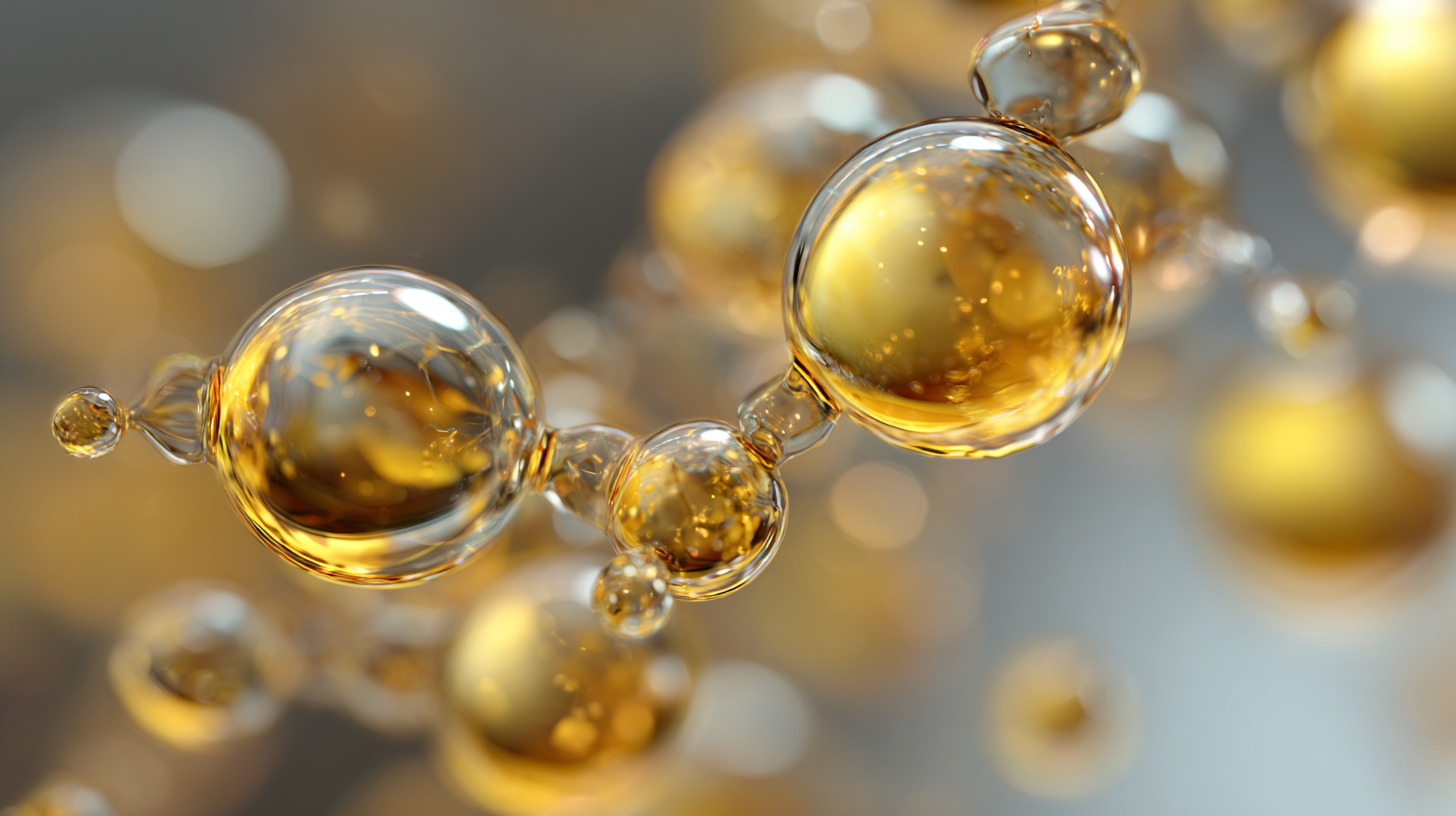
Ultimate Guide to Understanding Best Surfactant Molecules and Their Applications
In the ever-evolving landscape of chemical engineering and consumer products, surfactant molecules have emerged as indispensable components that enhance product performance across various industries. According to a recent report by MarketsandMarkets, the global surfactants market is projected to reach USD 46.2 billion by 2025, growing at a CAGR of 4.4% from 2020. This growth underscores the increasing importance of surfactant molecules not only in household cleaning products but also in personal care, pharmaceuticals, and agrochemicals. Their unique ability to reduce surface tension and improve the solubility of various substances makes them critical in formulating products with enhanced efficacy and user experience. As we delve into this ultimate guide, we will explore the different types of surfactant molecules, their properties, and innovative applications that are shaping the future of industries worldwide.

Understanding Surfactants: Basic Concepts and Definitions
 Surfactants, or amphiphiles, play a crucial role in a variety of applications, from pharmaceuticals to cosmetics. These molecules possess unique properties that allow them to self-assemble into structures such as micelles and vesicles, which are essential for transporting hydrophobic compounds in aqueous environments. Understanding the basic concepts and definitions of surfactants is vital for exploring their potential, especially in emerging fields like pediatric and neonatal medicine, where surfactant therapies have shown promise in treating acute respiratory distress syndrome (ARDS).
Surfactants, or amphiphiles, play a crucial role in a variety of applications, from pharmaceuticals to cosmetics. These molecules possess unique properties that allow them to self-assemble into structures such as micelles and vesicles, which are essential for transporting hydrophobic compounds in aqueous environments. Understanding the basic concepts and definitions of surfactants is vital for exploring their potential, especially in emerging fields like pediatric and neonatal medicine, where surfactant therapies have shown promise in treating acute respiratory distress syndrome (ARDS).
Recent advances highlight the importance of tailoring surfactant therapies to the specific characteristics of pediatric (PARDS) and neonatal (NARDS) ARDS. As research continues, there is a growing need for systematic approaches to evaluate surfactants. A newly developed method to assess the hydrophilic-lipophilic balance of surfactants, based on the phase inversion temperature of specific emulsions, represents a significant step forward. This innovation could refine our understanding of surfactant efficacy and enhance the formulation of therapies, leading to better clinical outcomes for vulnerable populations.
The Role of Surfactant Molecules in Various Industries
Surfactant molecules play a crucial role in various industries due to their unique properties that facilitate the reduction of surface tension between different phases. In the agricultural sector, surfactants are essential for improving the efficacy of pesticides and herbicides. By allowing these chemicals to spread evenly over plant surfaces, surfactants ensure better absorption and penetration, ultimately enhancing crop protection and yield. Their ability to modify surface characteristics makes them invaluable in agrochemical formulations.
In the personal care industry, surfactants are primarily used for their cleansing and emulsifying properties. They are fundamental ingredients in shampoos, facial cleansers, and lotions, enabling the removal of oils and dirt while providing a smooth, creamy texture. The interaction between surfactants and skin or hair surfaces creates a foaming action that not only enhances user experience but also contributes to the overall effectiveness of the product. Additionally, surfactants are increasingly being incorporated into eco-friendly formulations as consumers seek sustainable alternatives, further demonstrating their versatility and importance in modern product development.
Types of Surfactants: Characteristics and Applications
Surfactants, or surface-active agents, play a crucial role in various industries, ranging from cosmetics to food production. The characteristics and applications of surfactants can be categorized into four main types: anionic, cationic, nonionic, and zwitterionic surfactants, each bringing unique properties to the table. According to a recent report by Grand View Research, the global surfactants market was valued at over $38 billion in 2020, highlighting the increasing importance of these molecules in everyday products.
 Anionic surfactants, which carry a negative charge, are widely used in laundry detergents due to their excellent cleaning and foaming abilities. On the other hand, cationic surfactants, known for their antimicrobial properties, are commonly found in hair conditioners and fabric softeners.
Anionic surfactants, which carry a negative charge, are widely used in laundry detergents due to their excellent cleaning and foaming abilities. On the other hand, cationic surfactants, known for their antimicrobial properties, are commonly found in hair conditioners and fabric softeners.
Tips: When selecting a surfactant for your product, consider the pH level, as it can significantly influence the performance of ionic surfactants. Nonionic surfactants, which are less sensitive to pH changes, are particularly effective in applications requiring stable performance. For specialized applications, zwitterionic surfactants provide a unique advantage, maintaining effectiveness in both acidic and alkaline environments, making them ideal for high-performance formulations.
Understanding the diverse characteristics of these surfactants allows manufacturers to optimize their products for improved efficiency and consumer satisfaction.
Sustainable Surfactants: Innovations in Eco-Friendly Formulations
The demand for sustainable surfactants has surged in recent years as eco-conscious consumers drive the market towards greener formulations. Innovations in eco-friendly surfactants focus on harnessing renewable resources, minimizing environmental impact, and maintaining high performance. Bio-based surfactants, derived from natural sources such as plants and microorganisms, have emerged as effective alternatives to traditional petrochemical-based surfactants. These bio-surfactants not only reduce reliance on fossil fuels but also offer biodegradable options that align with sustainability goals.
Moreover, advancements in technologies have led to the development of smart surfactants that dynamically adjust their behavior based on environmental conditions. These innovative molecules can enhance product efficiency, reduce waste, and lower the overall carbon footprint of formulations. For example, biodegradable surfactants used in household and personal care products can still provide powerful cleaning and emulsifying properties while being gentle on aquatic life. As industries continue to integrate sustainability into their core strategies, the development and application of eco-friendly surfactants will play a crucial role in promoting a cleaner, greener future for both consumers and the planet.
Ultimate Guide to Understanding Best Surfactant Molecules and Their Applications - Sustainable Surfactants
This chart illustrates the eco-friendliness ratings of various surfactant molecules, which are rated on a scale from 1 to 10. The data reflects their potential in sustainable formulations.
Future Trends in Surfactant Technology and Global Impact
The future of surfactant technology is poised for significant advancements, driven by the increasing demand for sustainable and eco-friendly products. With growing concerns regarding environmental impact and consumer preference for green alternatives, researchers are focusing on bio-based surfactants derived from renewable resources. These innovative molecules not only reduce dependence on petrochemicals but also exhibit superior biodegradability, making them an attractive choice for industries ranging from cosmetics to pharmaceuticals.
Additionally, the incorporation of advanced technologies such as nanotechnology and artificial intelligence in surfactant formulation is set to revolutionize their applications. Nanostructured surfactants could enhance performance characteristics, such as solubility and stability, leading to more effective products in cleaning and personal care. As companies seek to streamline production and improve product efficacy, AI-driven formulations will enable rapid testing and optimization, ensuring the surfactants meet evolving consumer needs while minimizing environmental repercussions. The convergence of these trends signifies a transformative period for surfactant technology, with a global impact that prioritizes sustainability and innovation.
Ultimate Guide to Understanding Best Surfactant Molecules and Their Applications
| Surfactant Type | Molecular Structure | Common Applications | Future Trends |
|---|---|---|---|
| Anionic Surfactants | R-COO⁻ | Detergents, Emulsifiers | Biodegradable formulations |
| Cationic Surfactants | R-N⁺(CH₃)₃ | Fabric Softeners, Hair Conditioners | Sustainability in formulations |
| Nonionic Surfactants | R-O-(CH₂-CH₂-O)n-H | Cosmetics, Pharmaceuticals | Green chemistry innovations |
| Amphoteric Surfactants | R-CH₂CH₂-N+(CH₃)₂-COO⁻ | Mild cleaning products | Increasing use in personal care |
